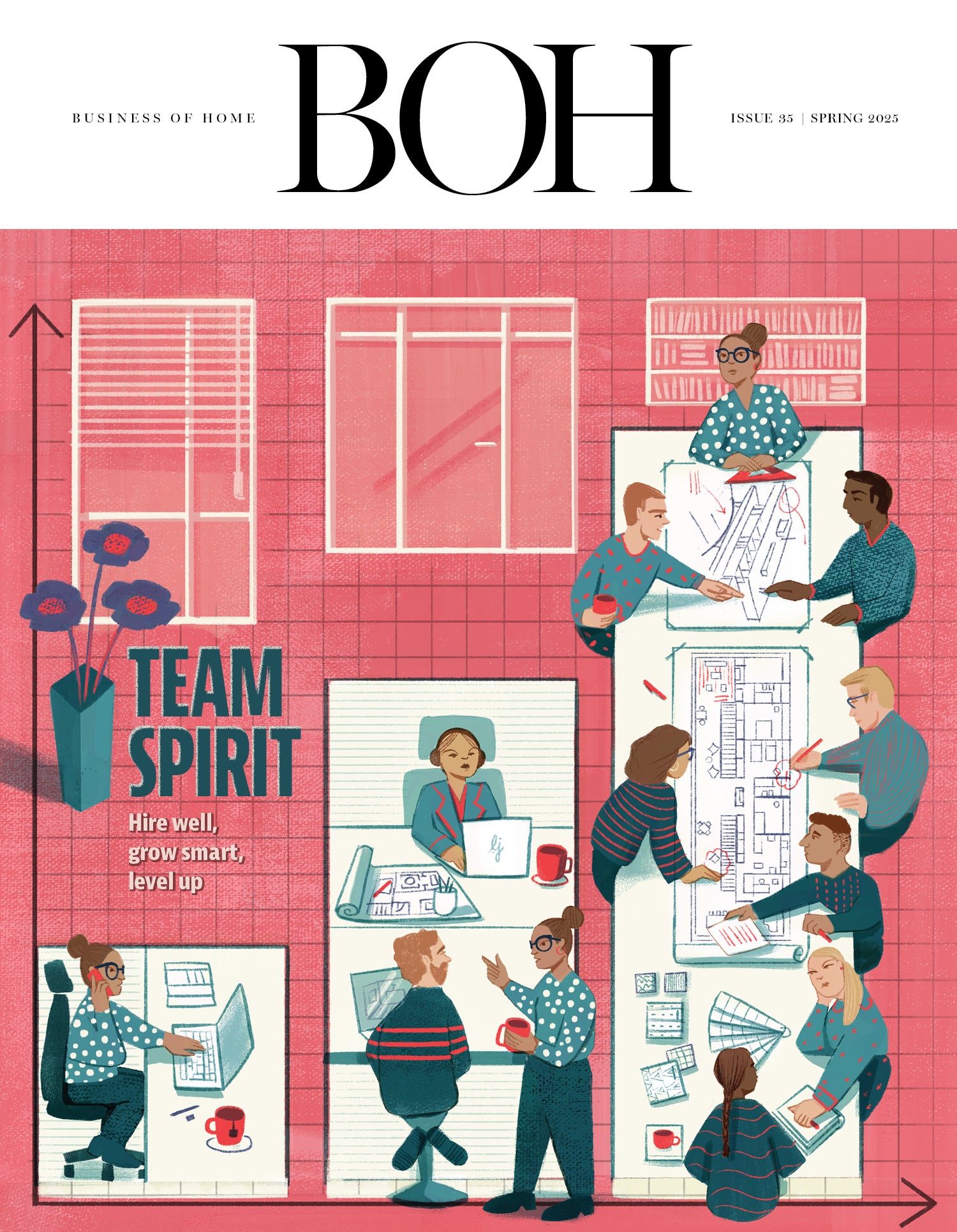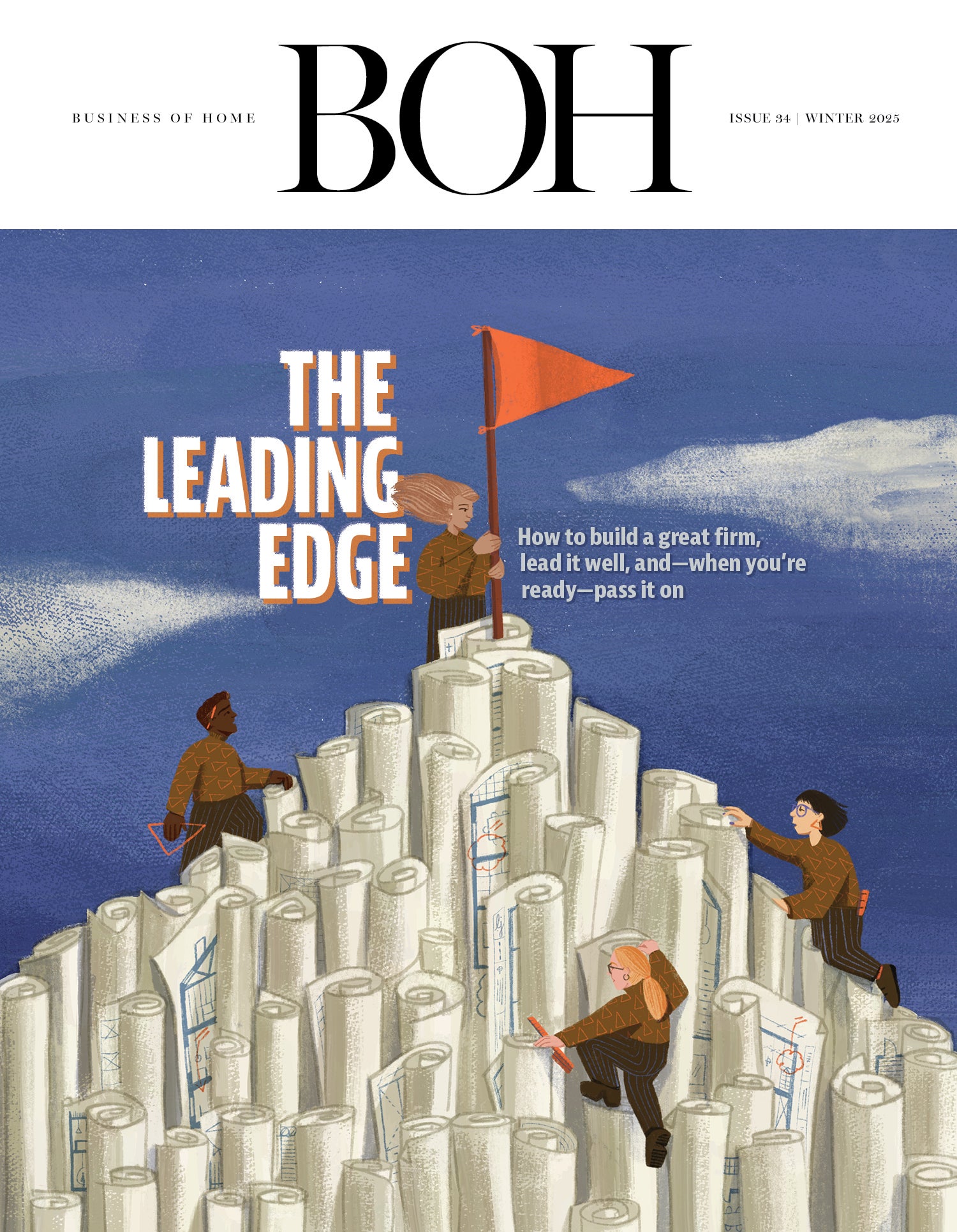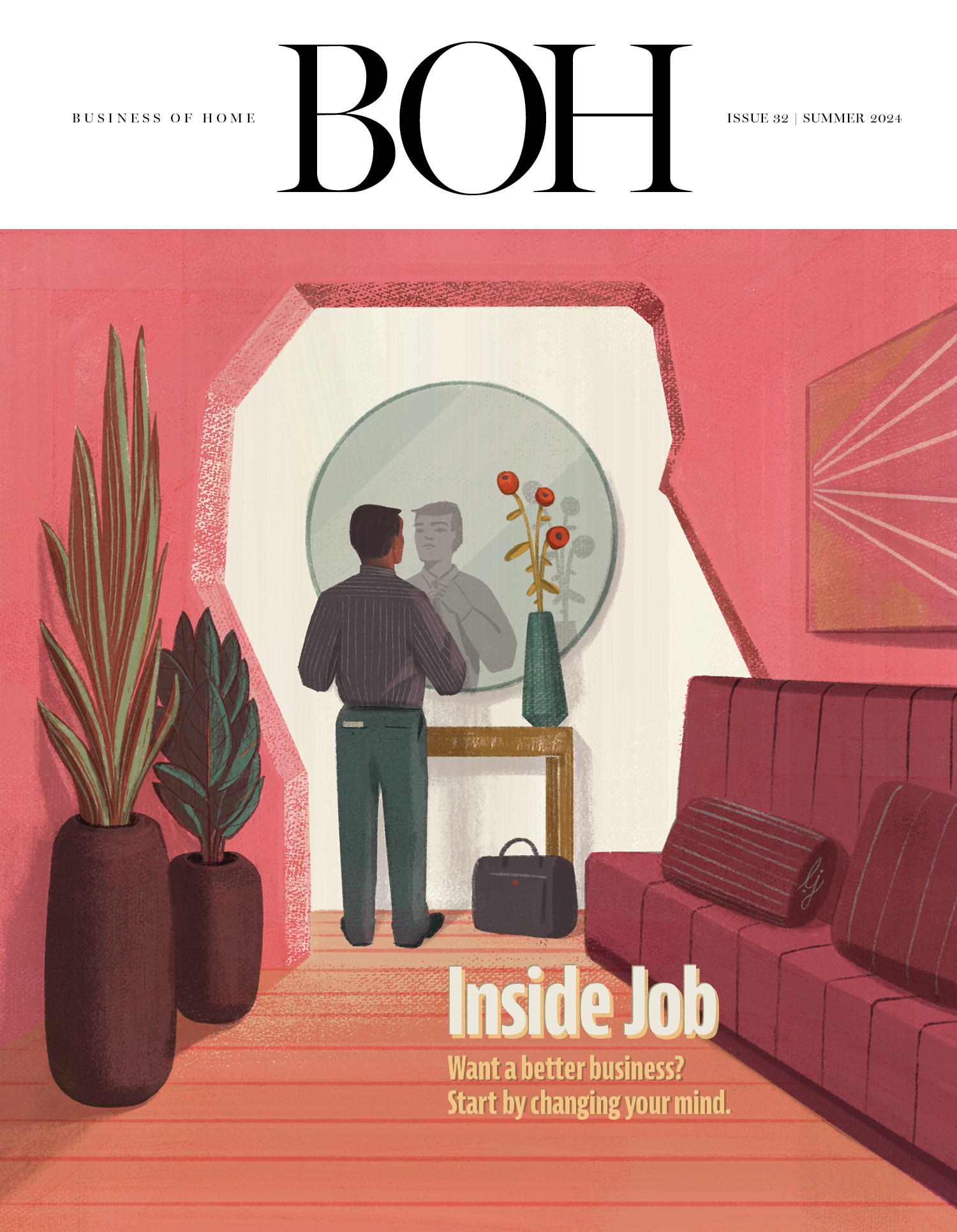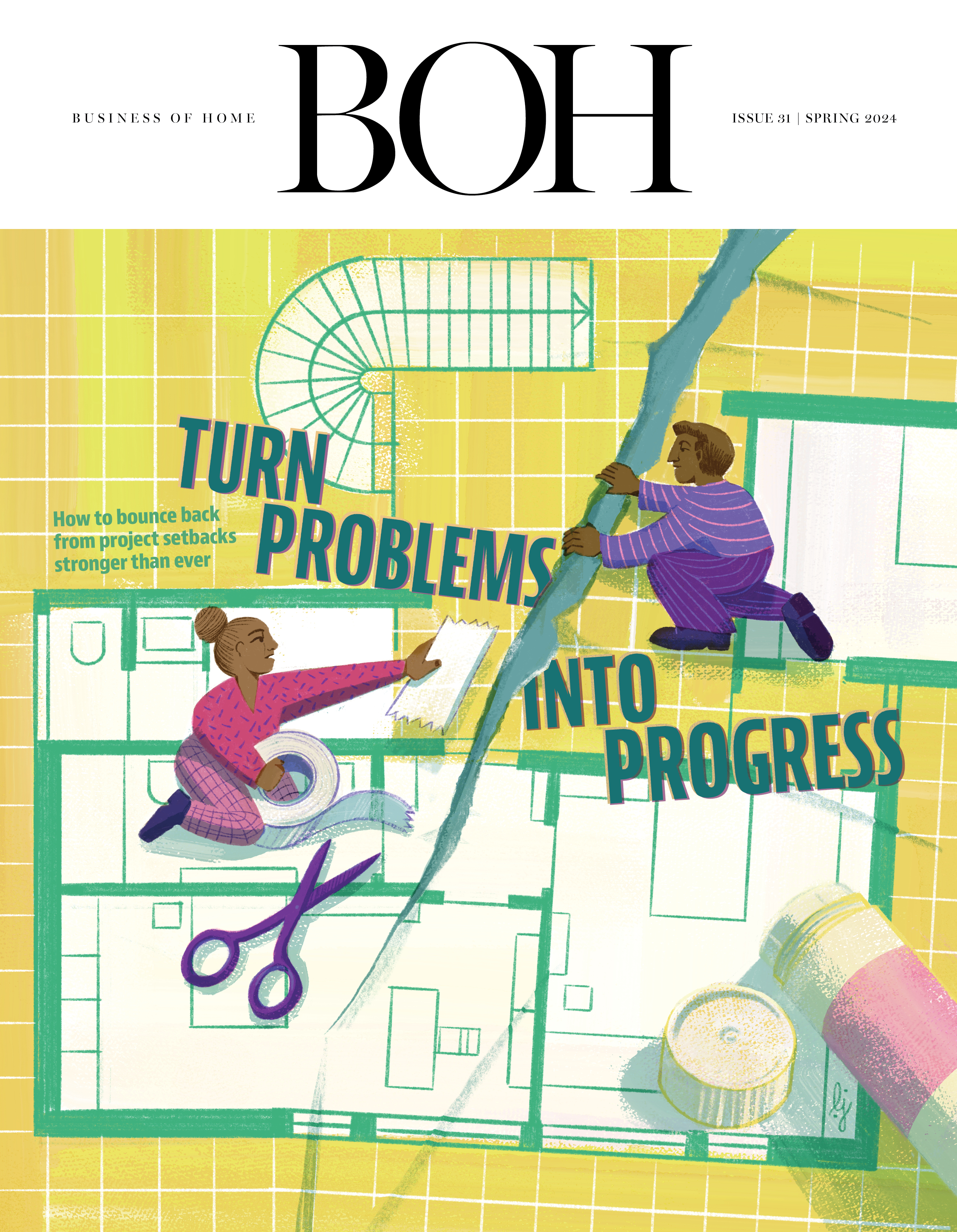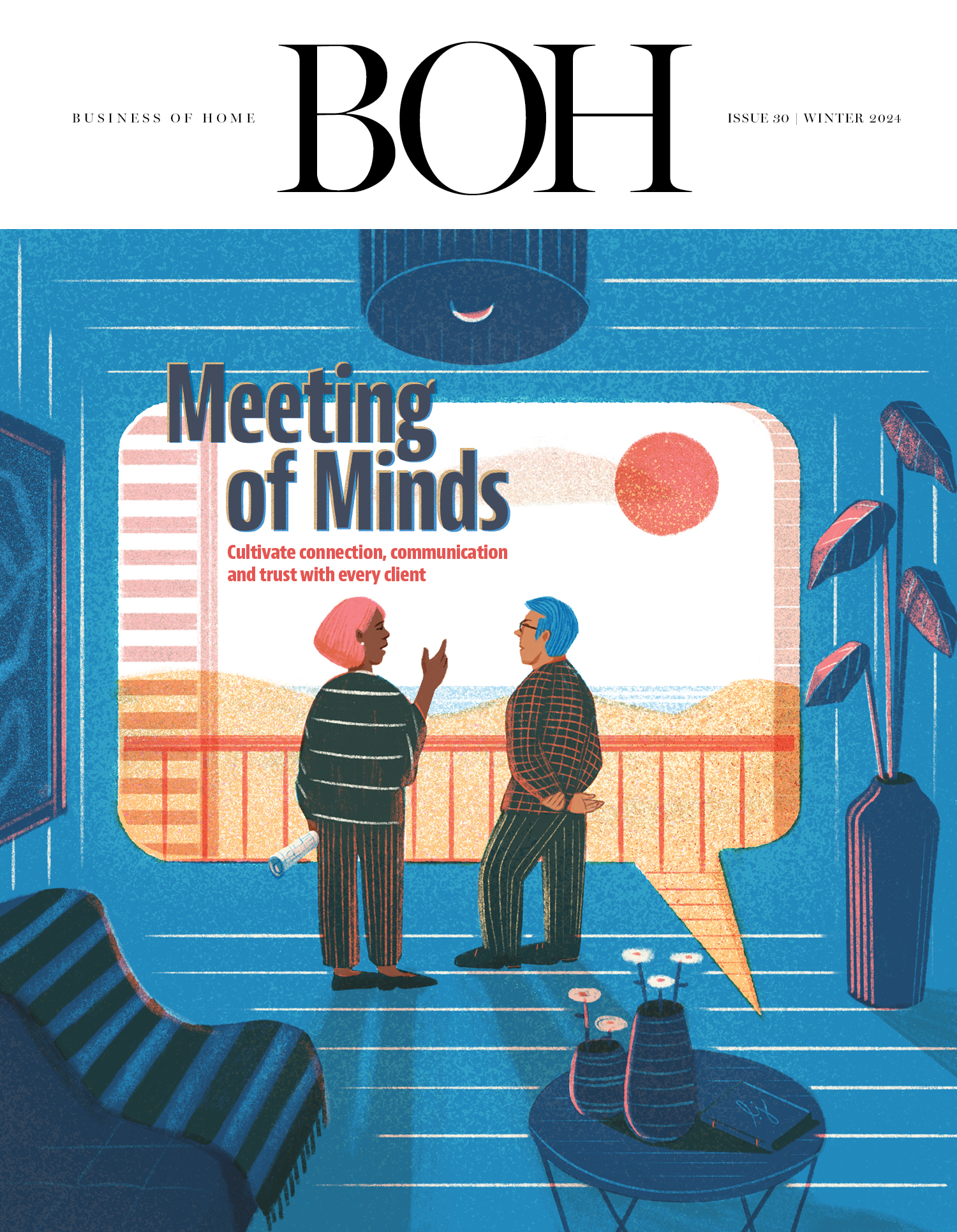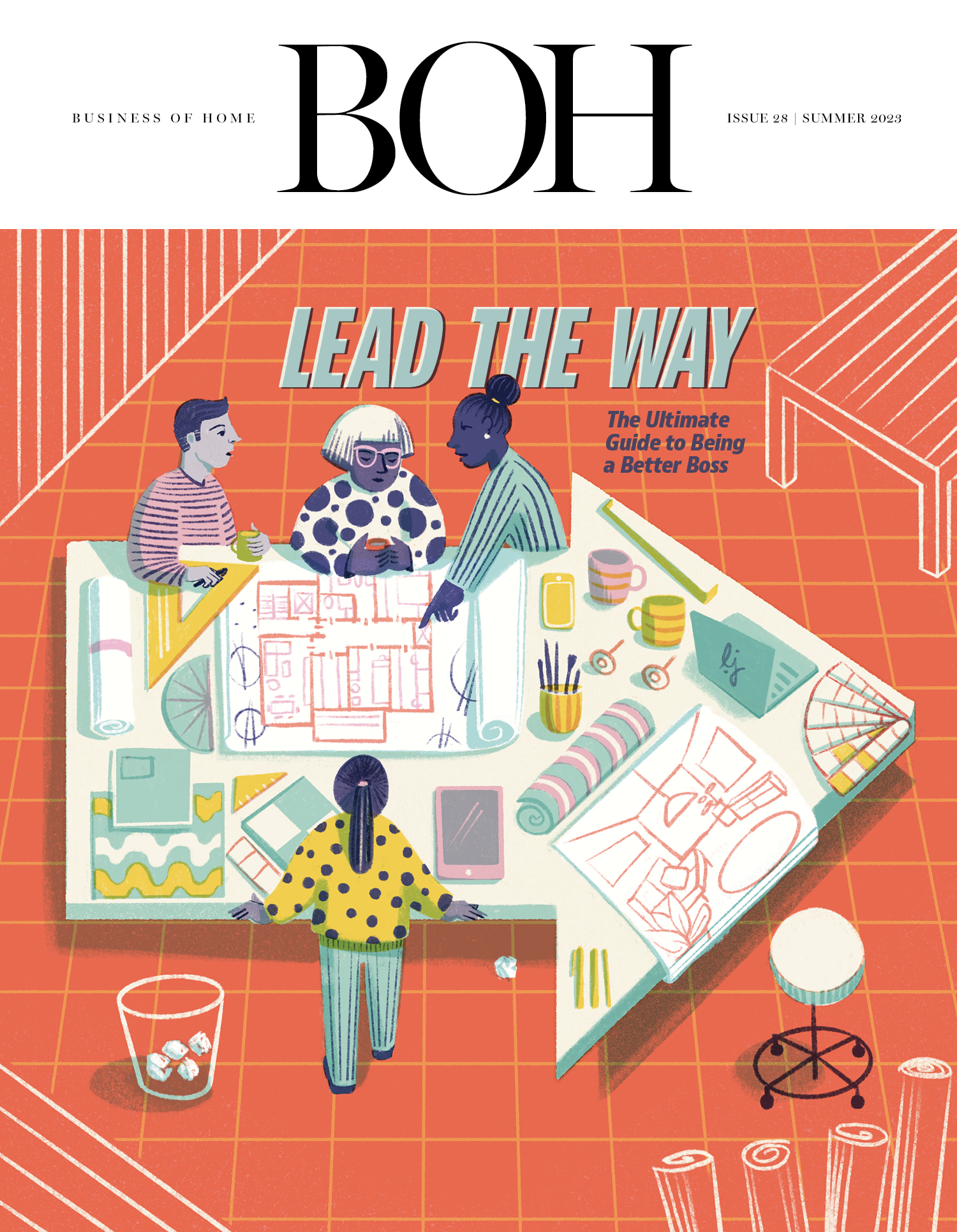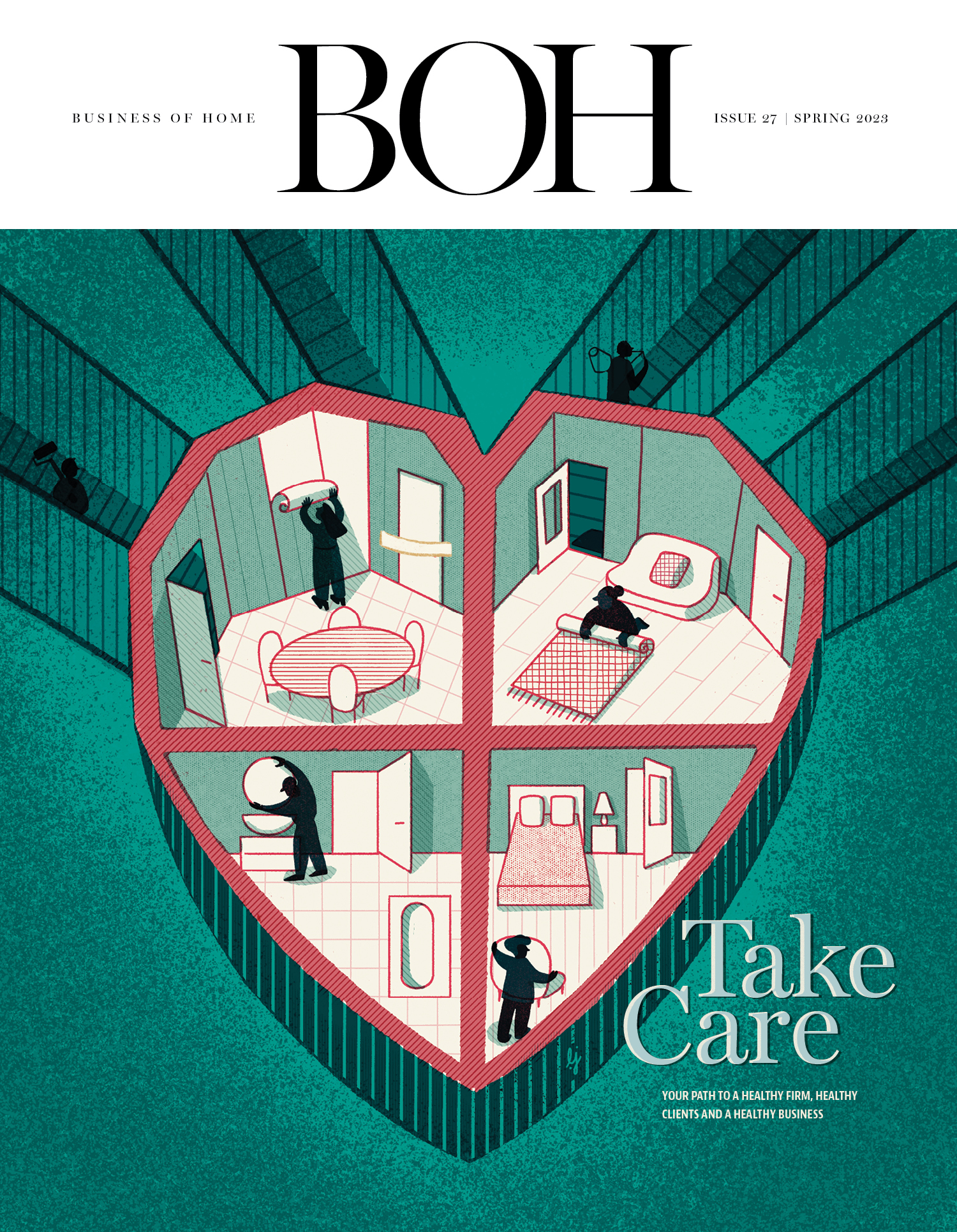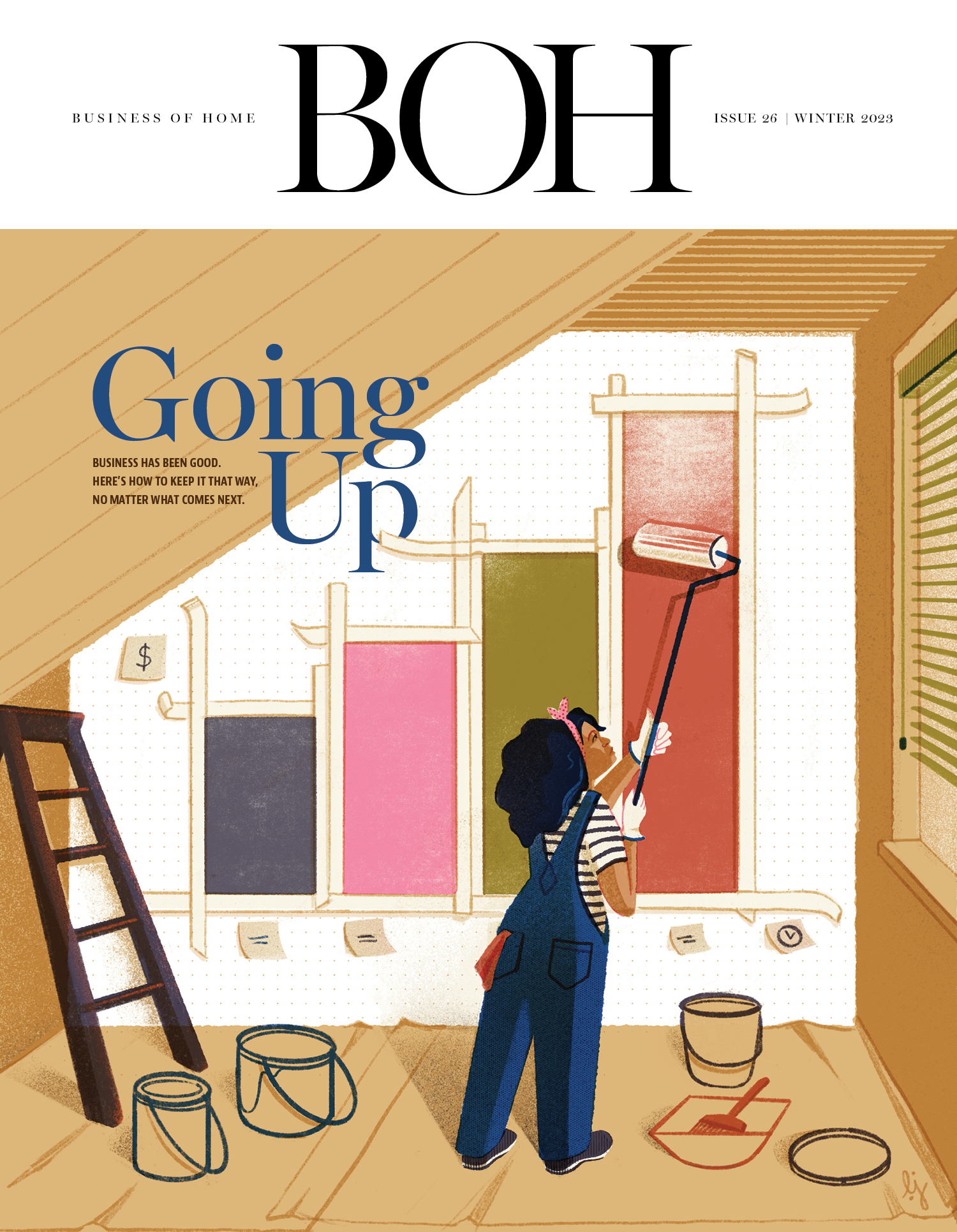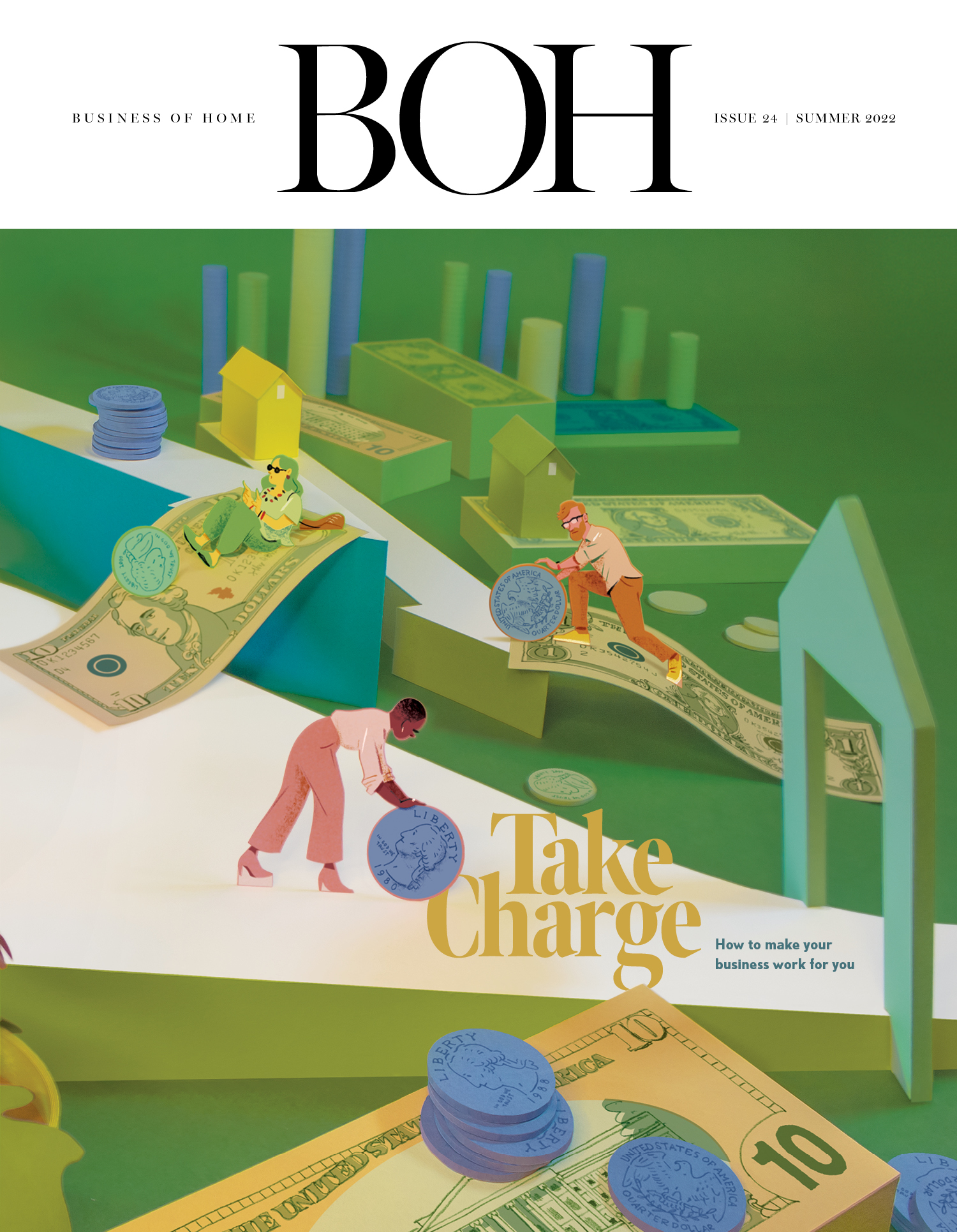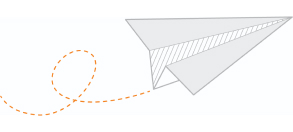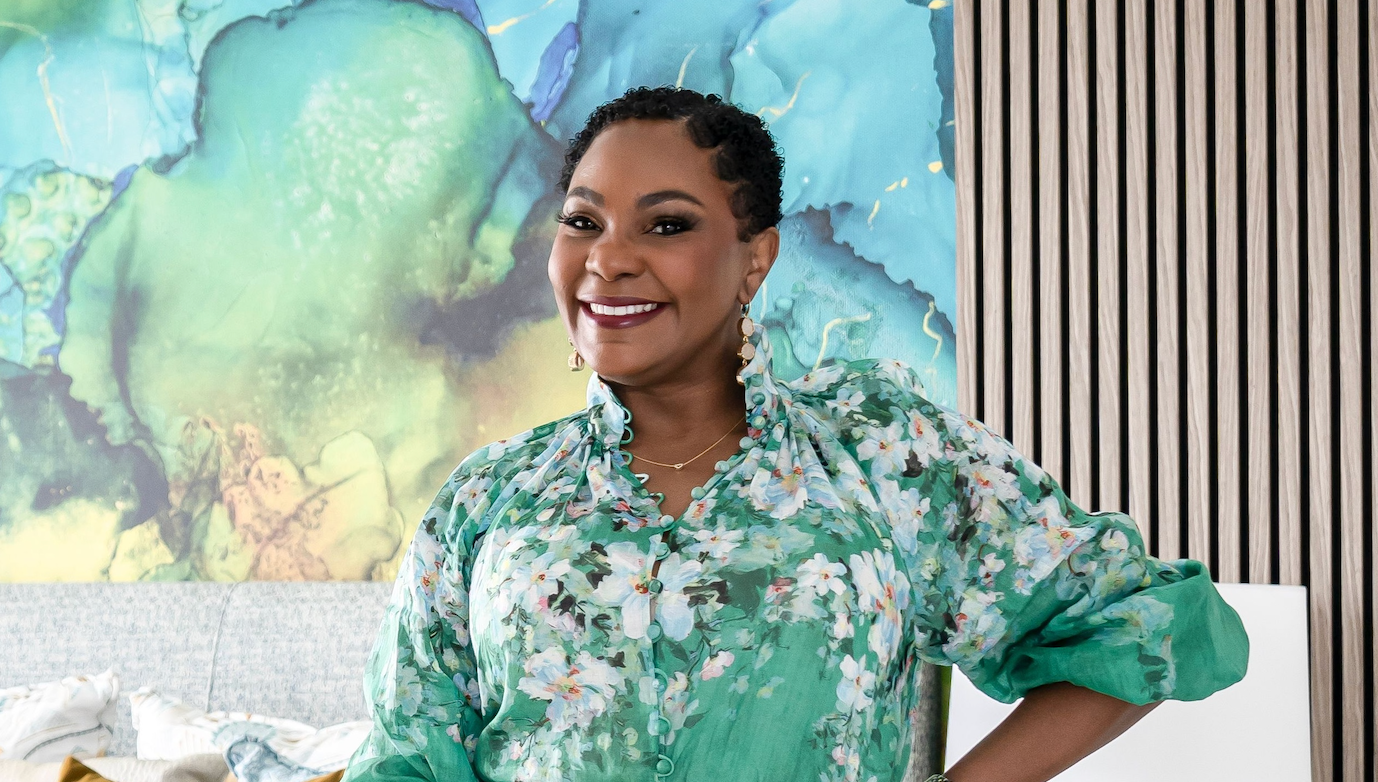When Arianne Bellizaire decided to leave her corporate career behind and go all in on design, she set her sights on a certain type of success: making the top industry lists, earning international recognition, and providing clients with the highest-level luxury experience. As she followed the advice of business books like The E-Myth and developed a long-term business plan, she predicted that she would need a team of at least 20 people to make her vision come to life.
Ever the perfectionist, Bellizaire did everything in her power to make that happen. She started building out her team and hired a consulting firm, which encouraged her to ascend to the role of CEO. The deeper she dove into the process of bringing her dream firm to life, however, the further she drifted from the parts of the process she loved most.
“I was never more exhausted in my life,” the Baton Rouge, Louisiana–based designer tells host Kaitlin Petersen on the latest episode of Trade Tales. “The joy that I had in design was taken away, because what I was learning was that to provide that experience, I had to lock in on being the business administrator and not the creative. That was when my foundation was shaken.”
After reflecting on what she wanted from her business, Bellizaire decided it was time to abandon her vision and find a new definition of success with a smaller, nimbler firm. With a little creativity and a carefully structured team, her design business has managed to continue offering the top-notch client experience she always strives for—while also freeing herself up to explore new opportunities across the industry. “It took that grieving of what I thought the dream of my design firm would be, but I have to tell you, standing in it today, I’ve never felt so light and free and properly aligned and positioned with where I’m going,” she says. “But it took stepping back and noticing the cues.”
Elsewhere in the episode, Bellizaire expands on the books that helped her imagine a new future for her firm, why she no longer hires out of desperation, and the importance of building out systems before deciding where to delegate and dismantle.
On May 14, savvy strategist Ericka Saurit helps designers understand where Instagram fits into a holistic marketing program—and how to employ the platform to express what makes your business unique and use content to connect emotionally with your ideal clients. Click here to learn more and remember, workshops are free for BOH Insiders.
Crucial insight: When it comes to vetting potential projects, Bellizaire routinely asks prospective clients to choose their main driver behind hiring a designer: cost, time or scope? If the answer is cost, they often have a strict budget and aren’t willing to budge—while if they’re choosing time, they may have an upcoming event or personal deadline that doesn’t always work for the firm. “The ones we love are the people who say scope,” she says. “That tells us it’s about getting it right. It’s about being responsive to their needs. It’s about being creative. It’s about the design concept and what they want, and they are open to what it’s going to cost and how long it’s going to take to do that.”
Key quote: “The overarching theme that you could take away from my journey is being OK with being the outlier, being OK with being the one who’s different. Even though it feels uncomfortable in the moment, it becomes your superpower when others are looking at a sea of people who all kind of look the same, and you’re the one person marching to your own beat. It’s scary, and you are doubting yourself at that moment, but if you just stick to the courage of, ‘This is what feels right to me, and I’m going to do it confidently,’ it becomes a great asset for you as you grow your business.”
This episode was sponsored by Surya and Regina Andrew. If you like what you hear, subscribe on Apple Podcasts or Spotify.



